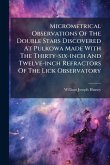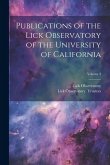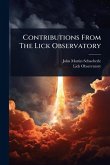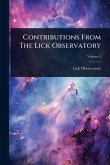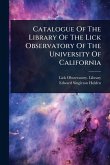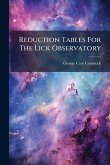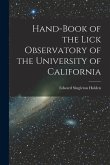"Lick Observatory Papers" presents a detailed historical and scientific overview of the research conducted at the Lick Observatory. Authored by William Joseph Hussey, this collection highlights the significant contributions of the observatory to the field of astronomy. It covers various astronomical observations, discoveries, and the development of astronomical instruments used at the observatory. This volume offers insights into the challenges and triumphs of early astronomical research, making it an invaluable resource for historians of science, astronomers, and anyone interested in the exploration of space. The papers document the meticulous work and dedication of the scientists who advanced our understanding of the universe at Lick Observatory. This work has been selected by scholars as being culturally important, and is part of the knowledge base of civilization as we know it. This work was reproduced from the original artifact, and remains as true to the original work as possible. Therefore, you will see the original copyright references, library stamps (as most of these works have been housed in our most important libraries around the world), and other notations in the work. This work is in the public domain in the United States of America, and possibly other nations. Within the United States, you may freely copy and distribute this work, as no entity (individual or corporate) has a copyright on the body of the work. As a reproduction of a historical artifact, this work may contain missing or blurred pages, poor pictures, errant marks, etc. Scholars believe, and we concur, that this work is important enough to be preserved, reproduced, and made generally available to the public. We appreciate your support of the preservation process, and thank you for being an important part of keeping this knowledge alive and relevant.
Bitte wählen Sie Ihr Anliegen aus.
Rechnungen
Retourenschein anfordern
Bestellstatus
Storno


